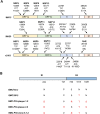Animal models for emerging coronavirus: progress and new insights
- PMID: 32378471
- PMCID: PMC7269044
- DOI: 10.1080/22221751.2020.1764871
Animal models for emerging coronavirus: progress and new insights
Abstract
The emergences of coronaviruses have caused a serious global public health problem because their infection in humans caused the severe acute respiratory disease and deaths. The outbreaks of lethal coronaviruses have taken place for three times within recent two decades (SARS-CoV in 2002, MERS-CoV in 2012 and SARS-CoV-2 in 2019). Much more serious than SARS-CoV in 2002, the current SARS-CoV-2 infection has been spreading to more than 213 countries, areas or territories and causing more than two million cases up to date (17 April 2020). Unfortunately, no vaccine and specific anti-coronavirus drugs are available at present time. Current clinical treatment at hand is inadequate to suppress viral replication and inflammation, and reverse organ failure. Intensive research efforts have focused on increasing our understanding of viral biology of SARS-CoV-2, improving antiviral therapy and vaccination strategies. The animal models are important for both the fundamental research and drug discovery of coronavirus. This review aims to summarize the animal models currently available for SARS-CoV and MERS-CoV, and their potential use for the study of SARS-CoV-2. We will discuss the benefits and caveats of these animal models and present critical findings that might guide the fundamental studies and urgent treatment of SARS-CoV-2-caused diseases.
Keywords: Coronavirus; animal model; infectious disease; respiratory syndrome; vaccine and drug discovery.
Conflict of interest statement
No potential conflict of interest was reported by the author(s).
Figures


References
-
- Ksiazek TG, Erdman D, Goldsmith CS, et al. . A novel coronavirus associated with severe acute respiratory syndrome. N Engl J Med. 2003 May 15;348(20):1953–1966. - PubMed
Publication types
MeSH terms
Grants and funding
LinkOut - more resources
Full Text Sources
Molecular Biology Databases
Miscellaneous
